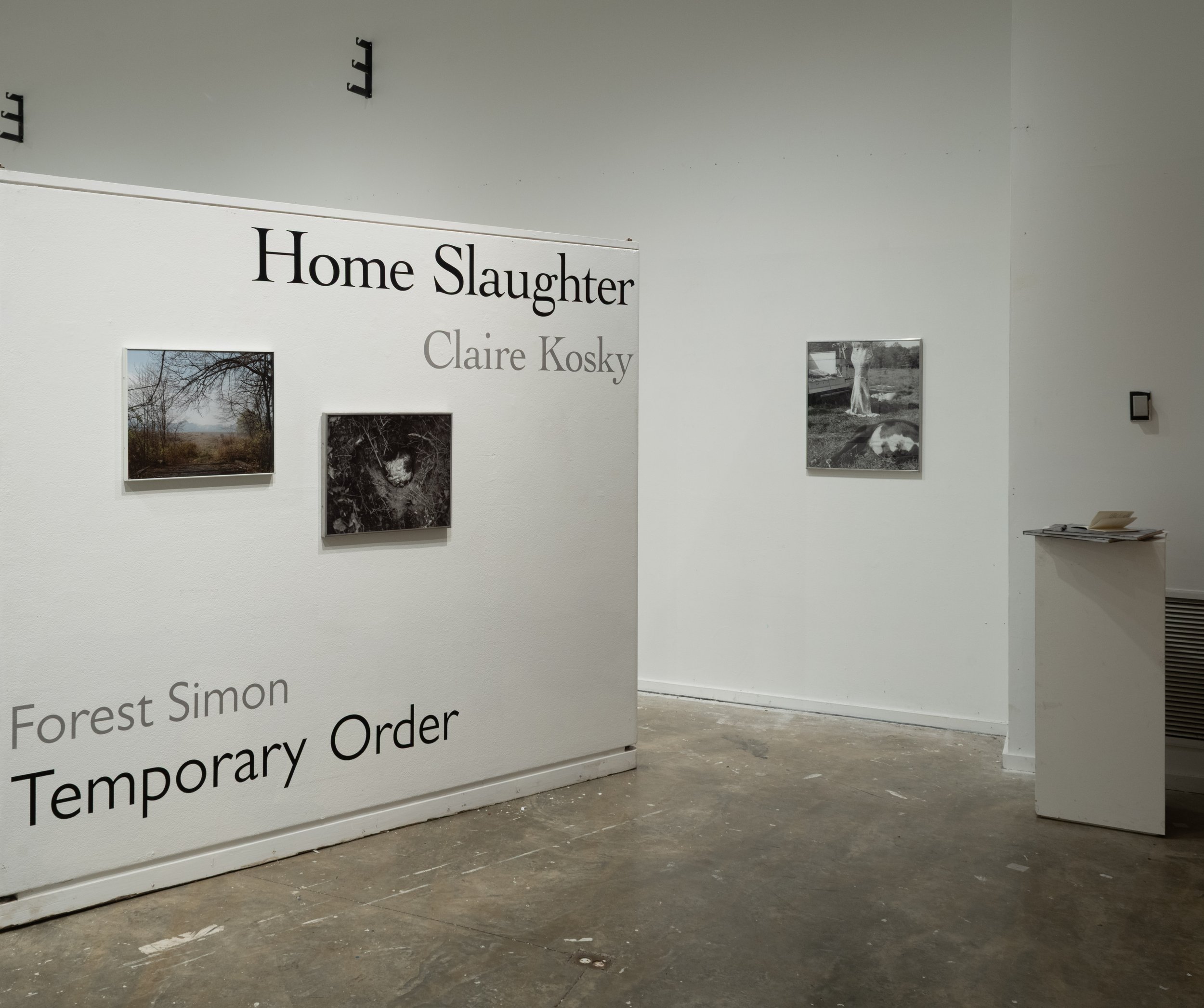
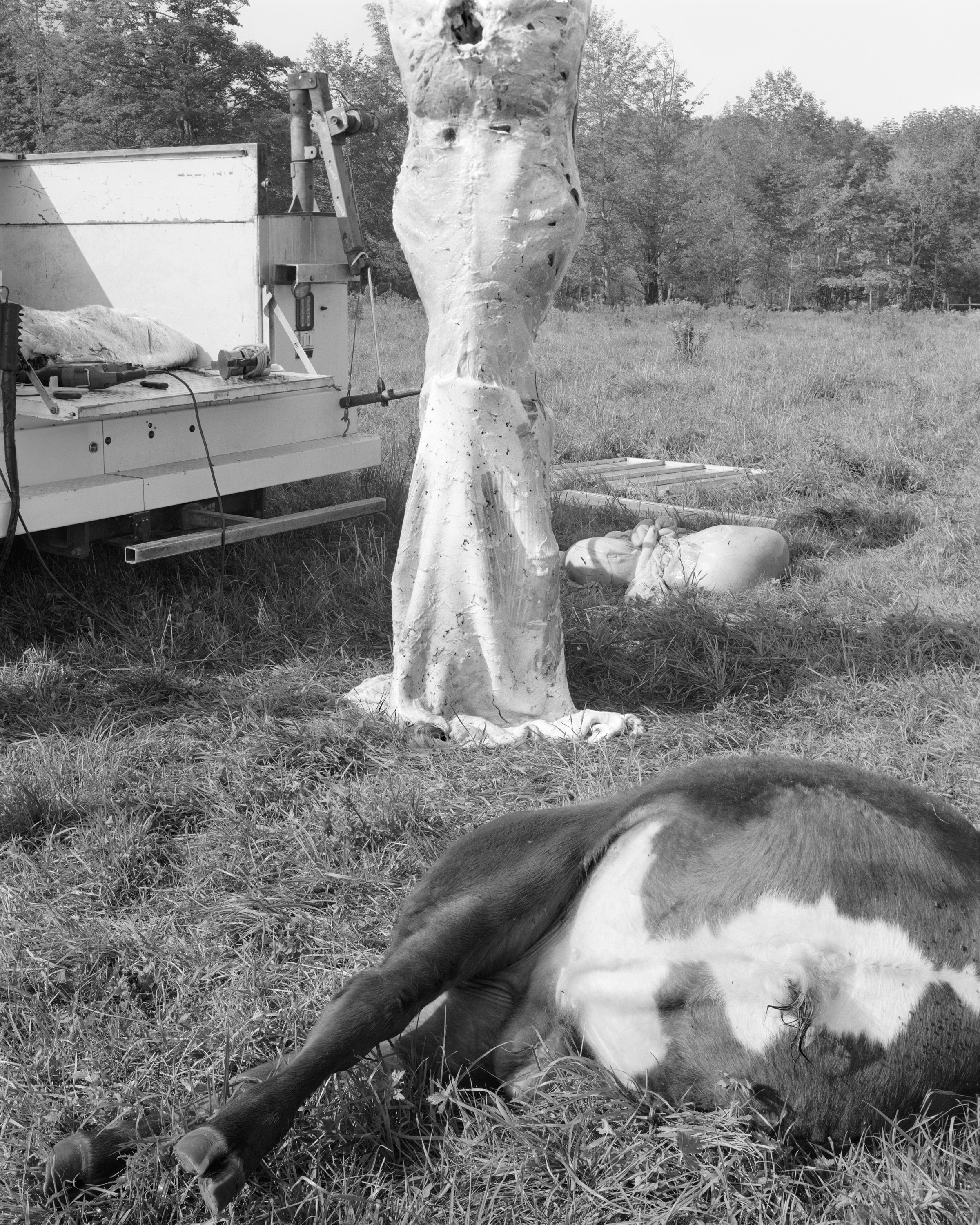


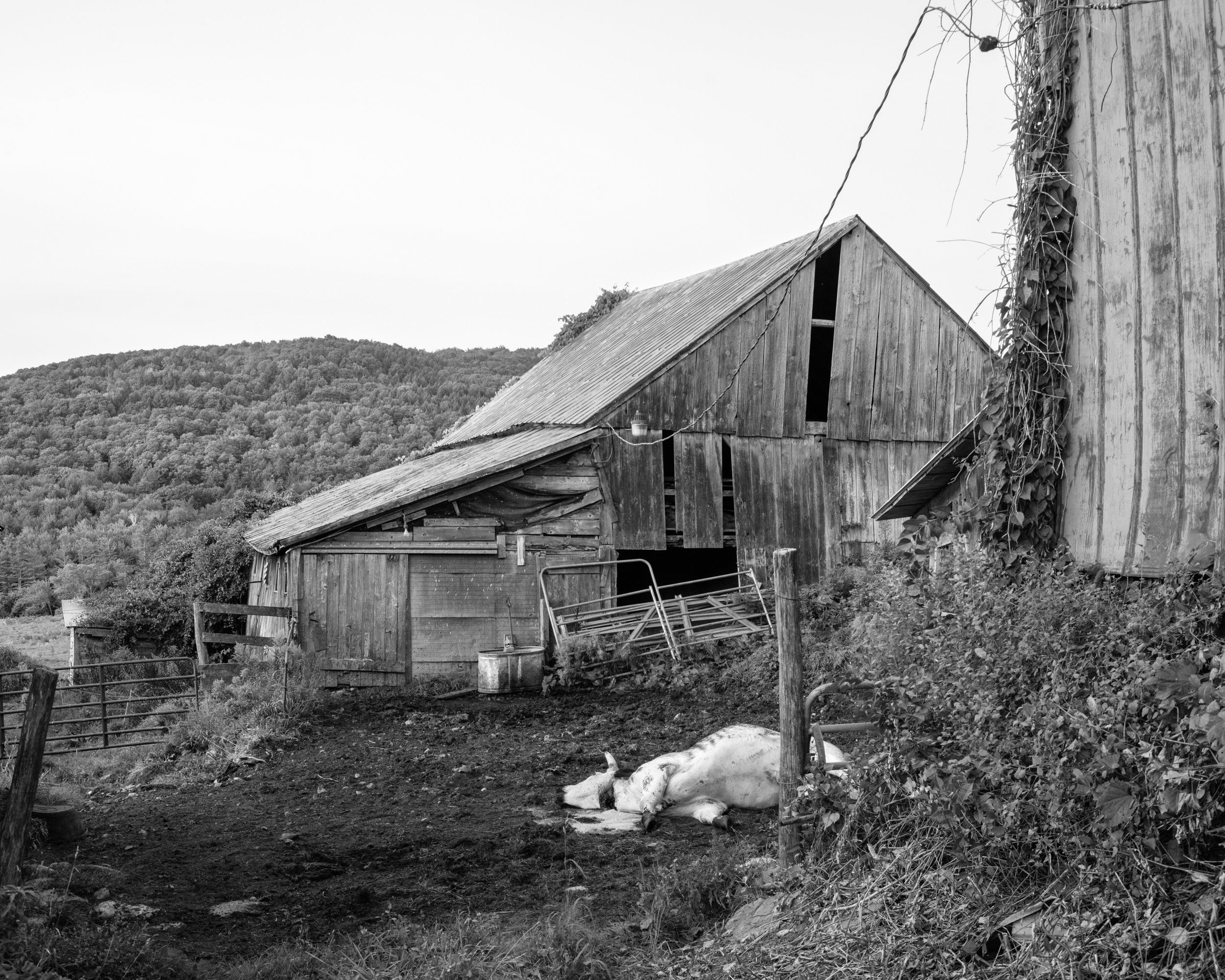
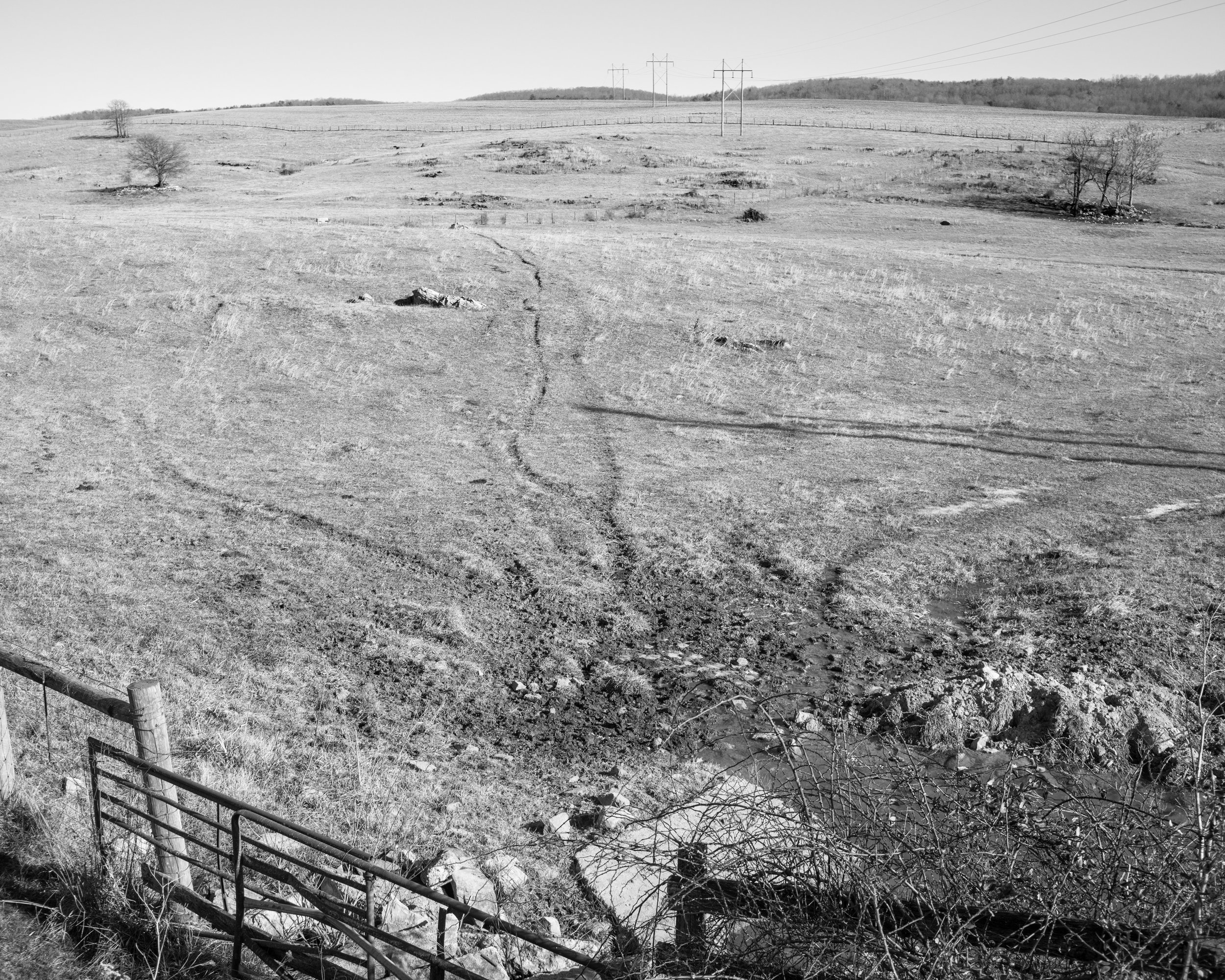
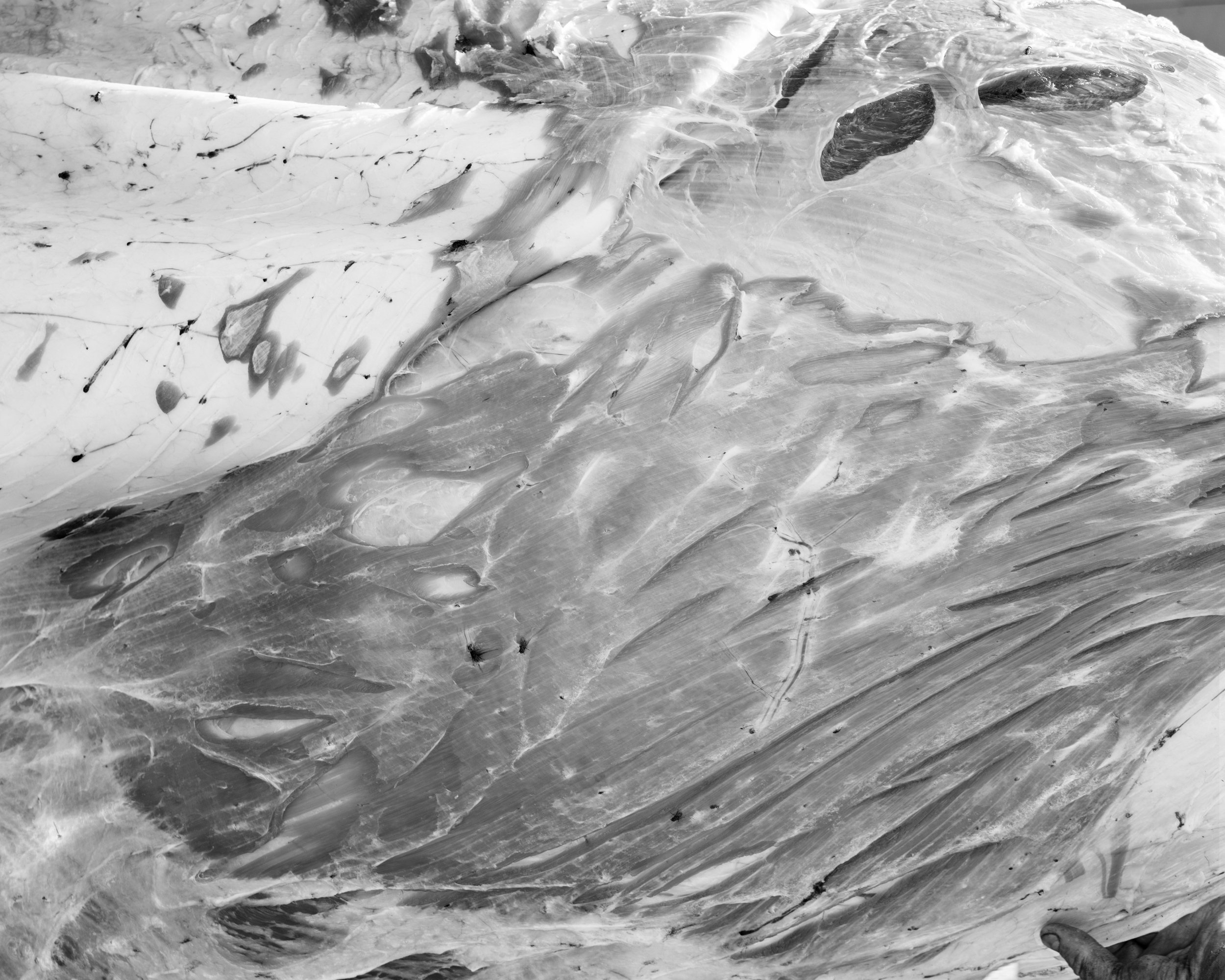




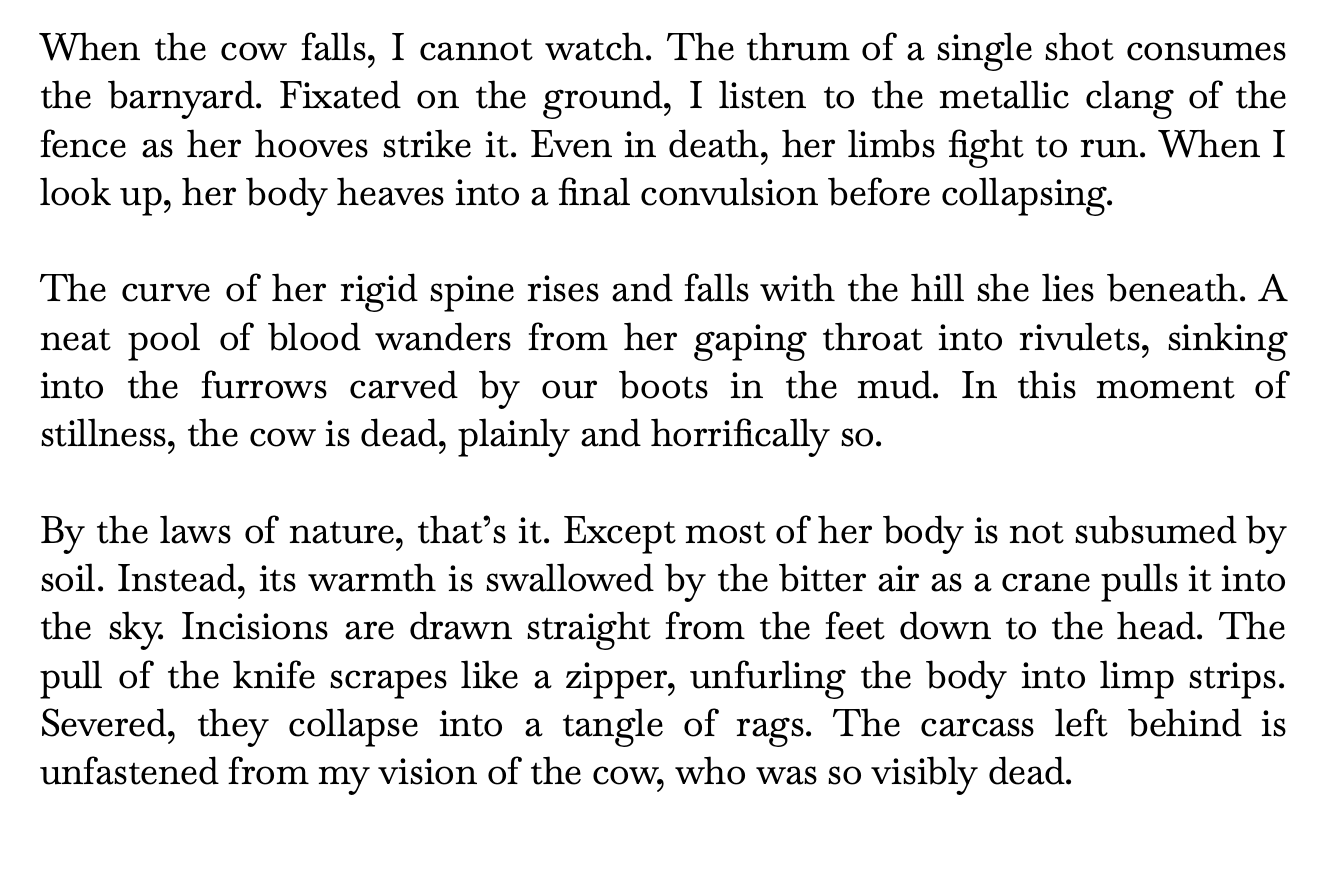


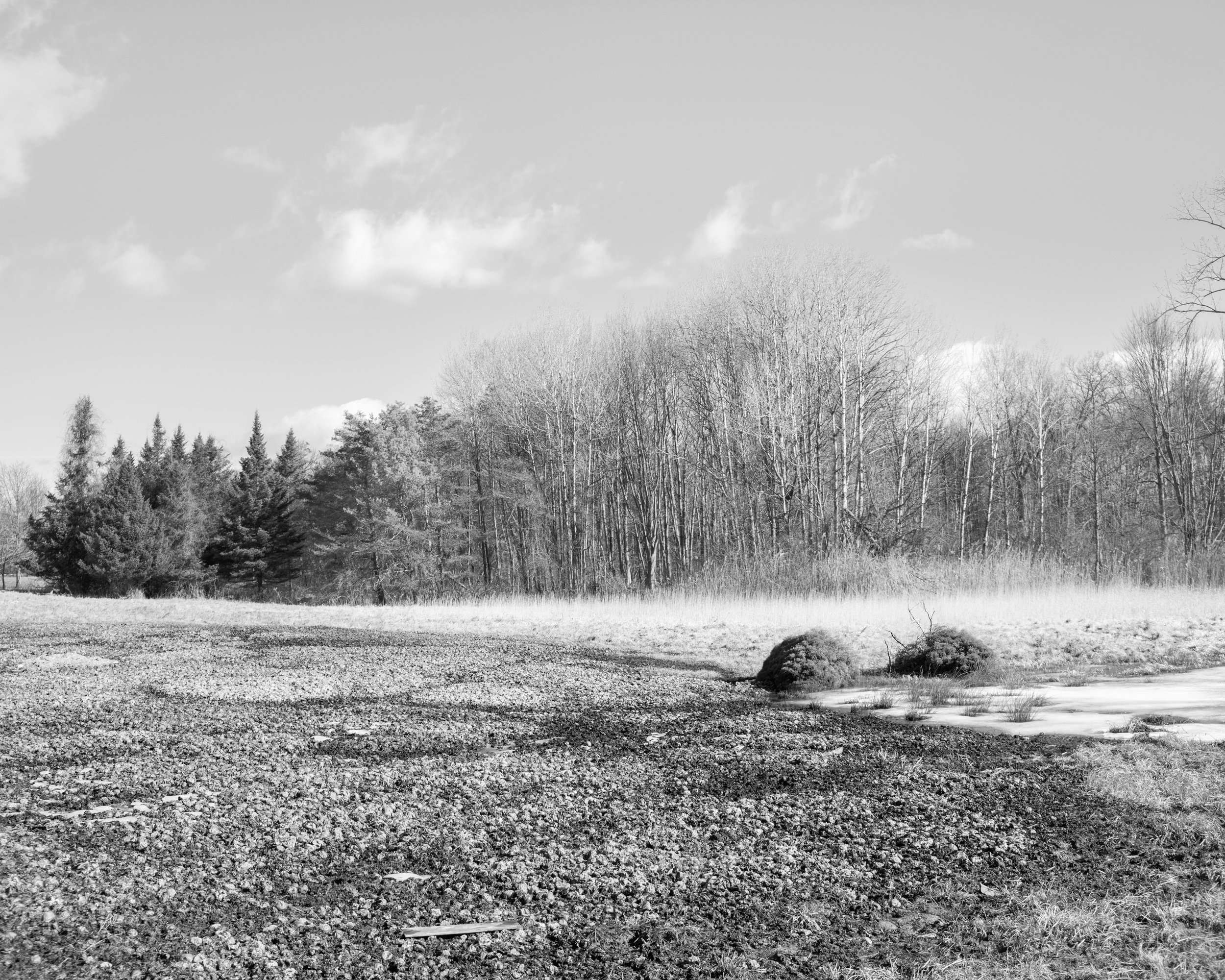
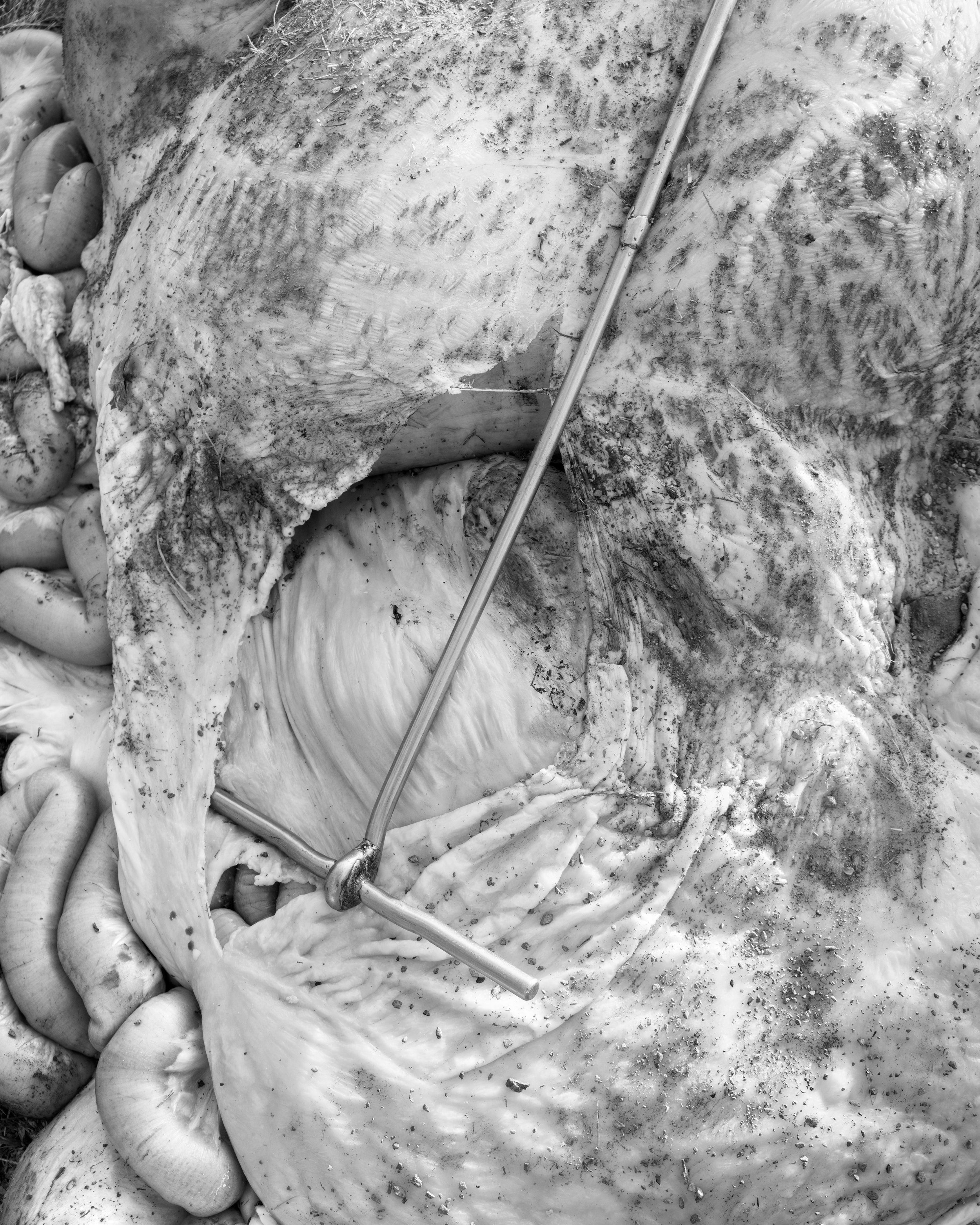
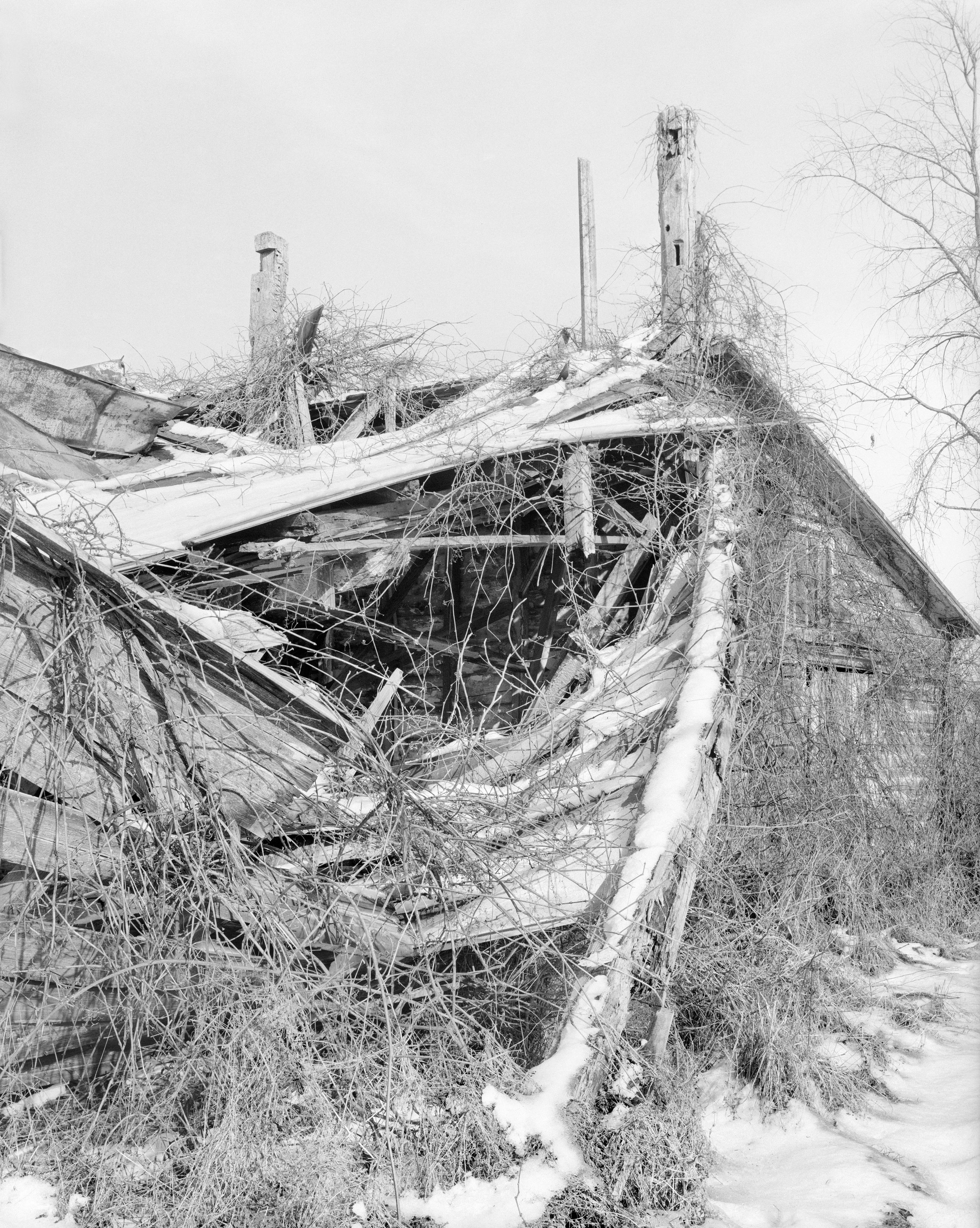
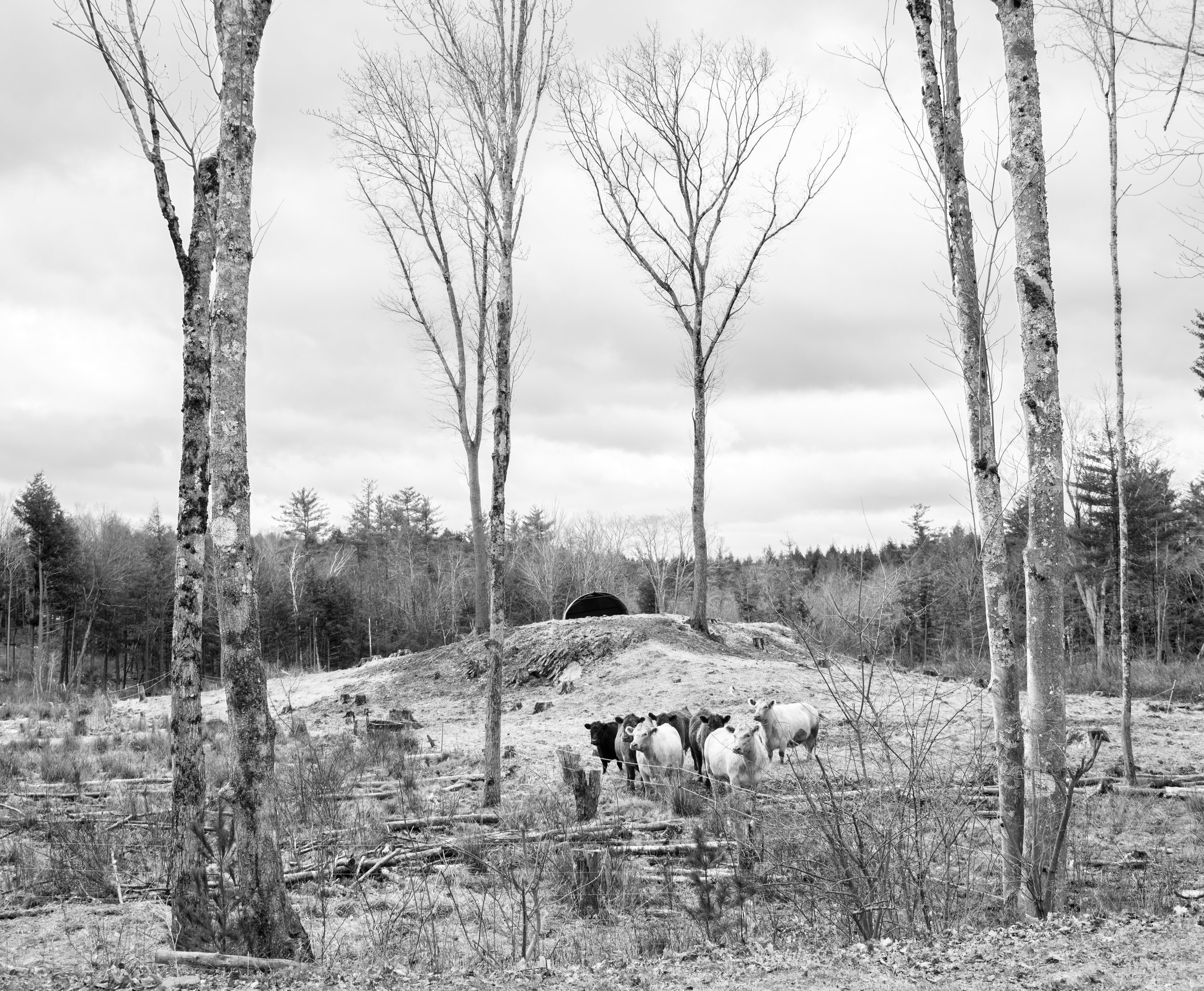
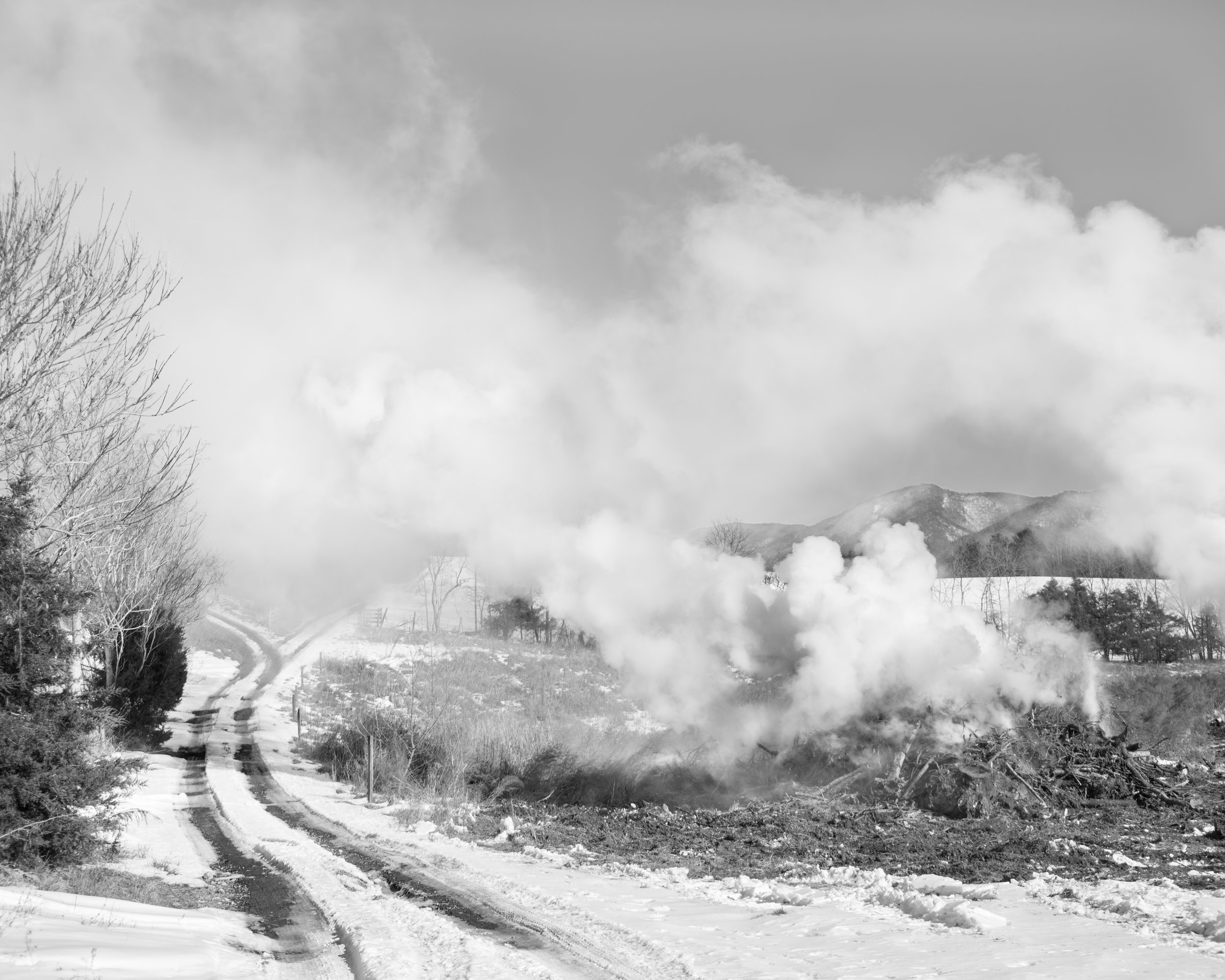
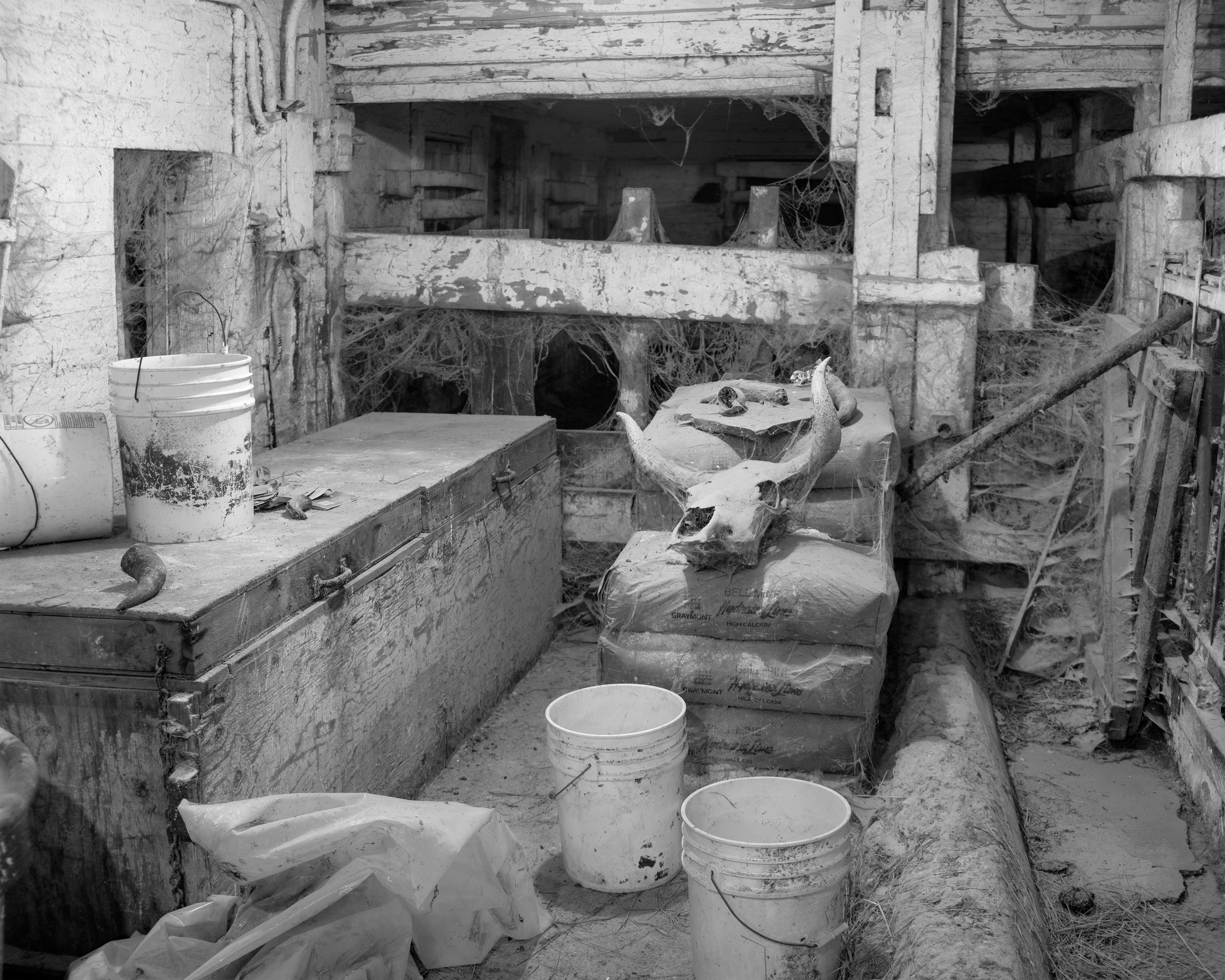
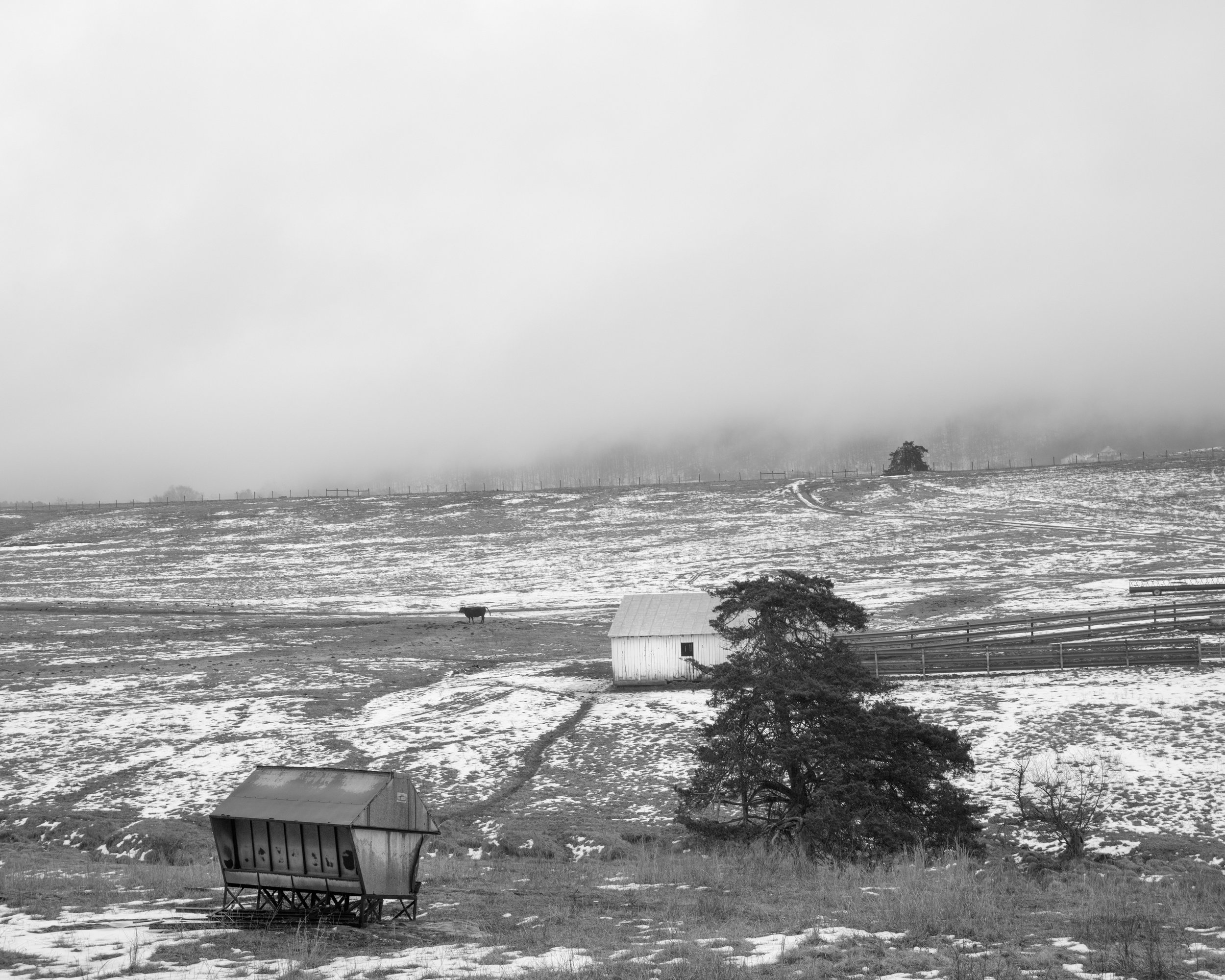



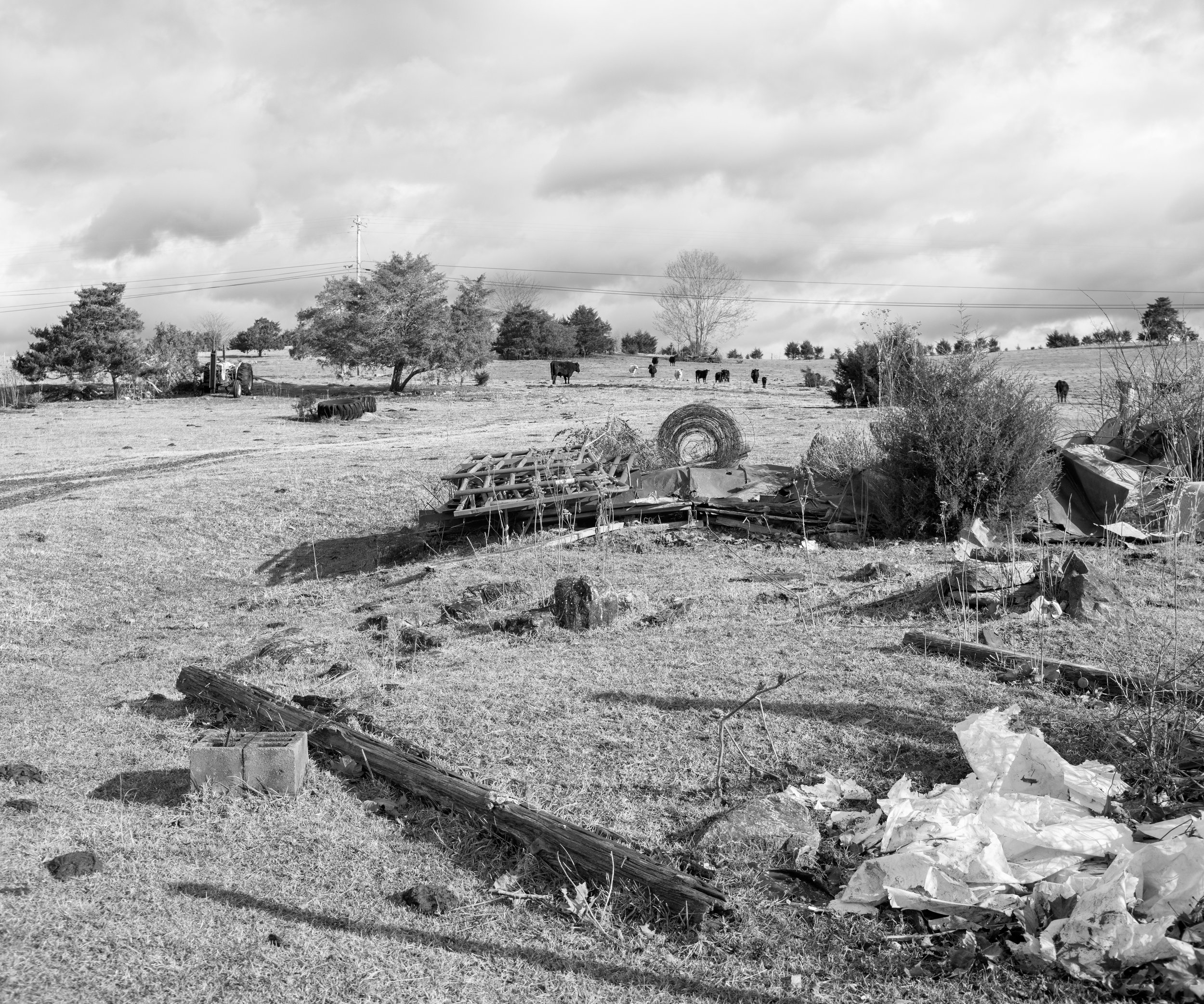


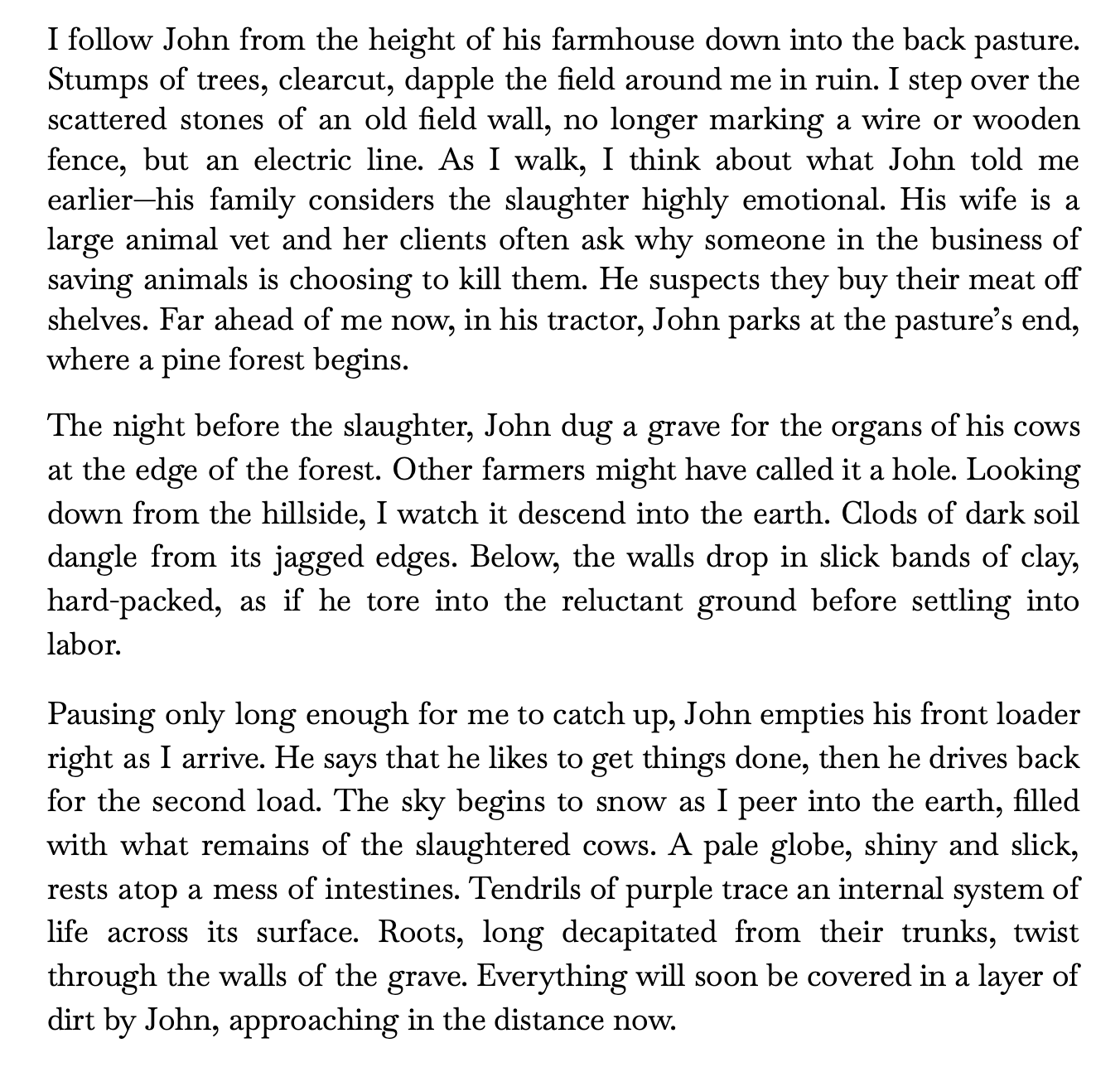
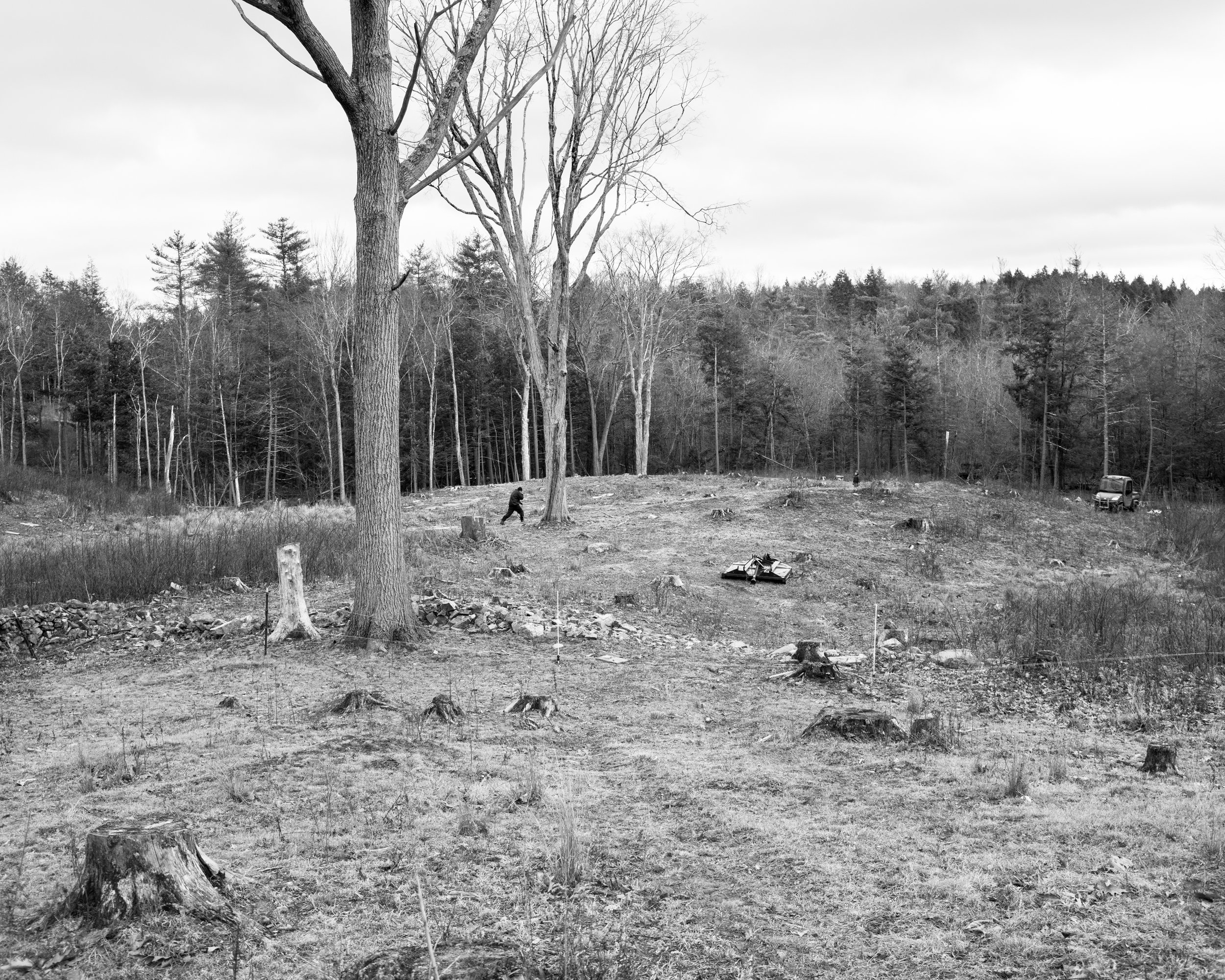

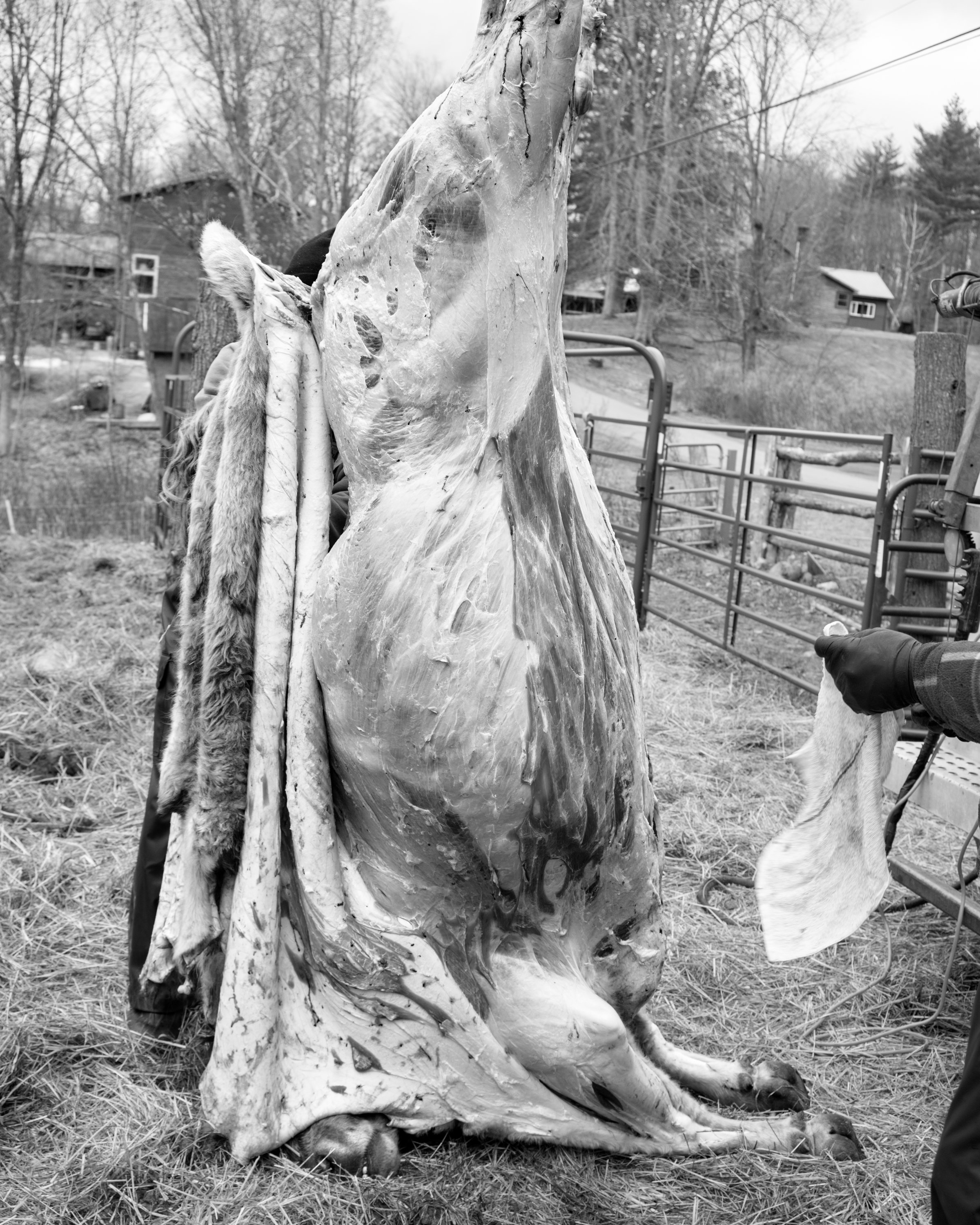
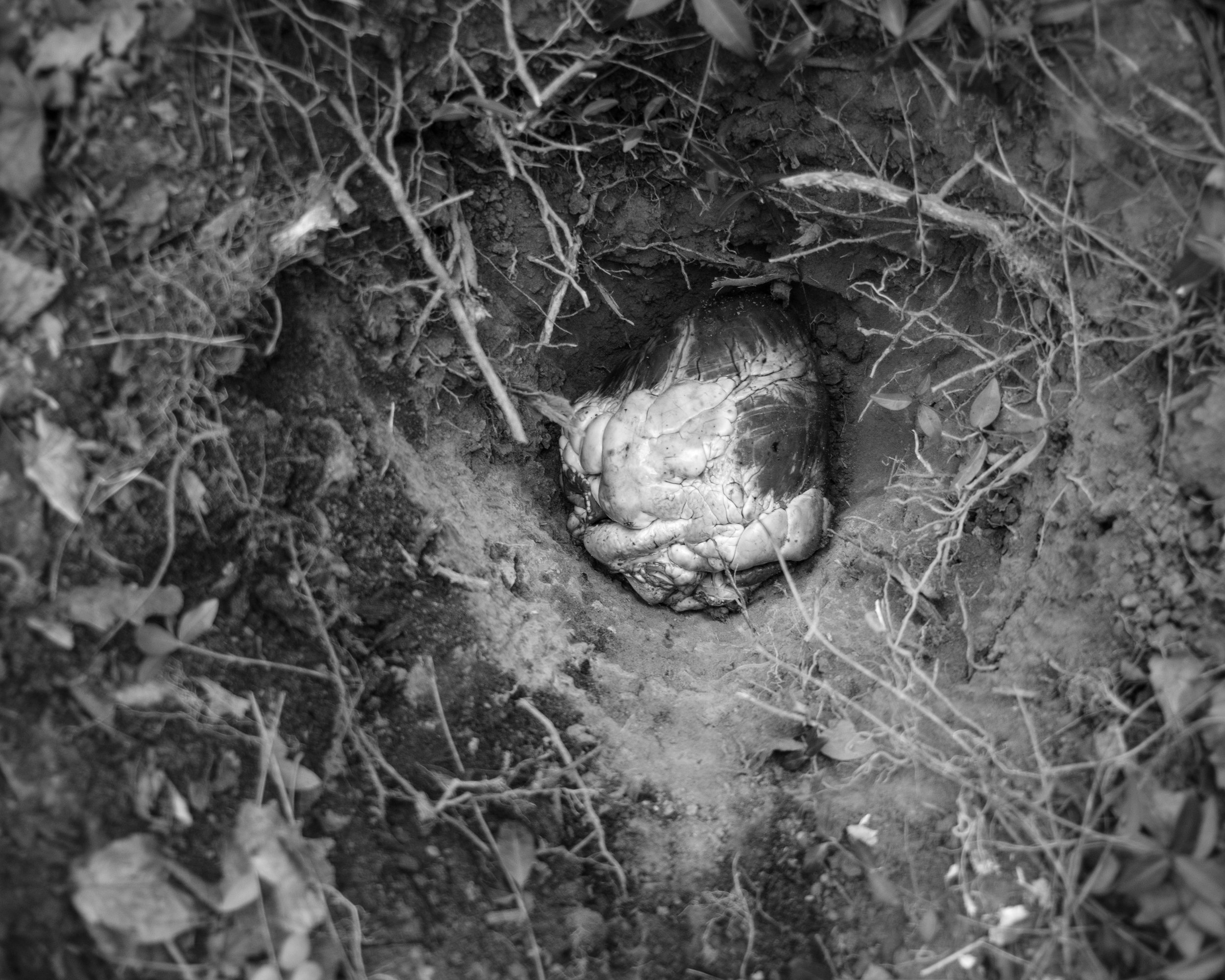
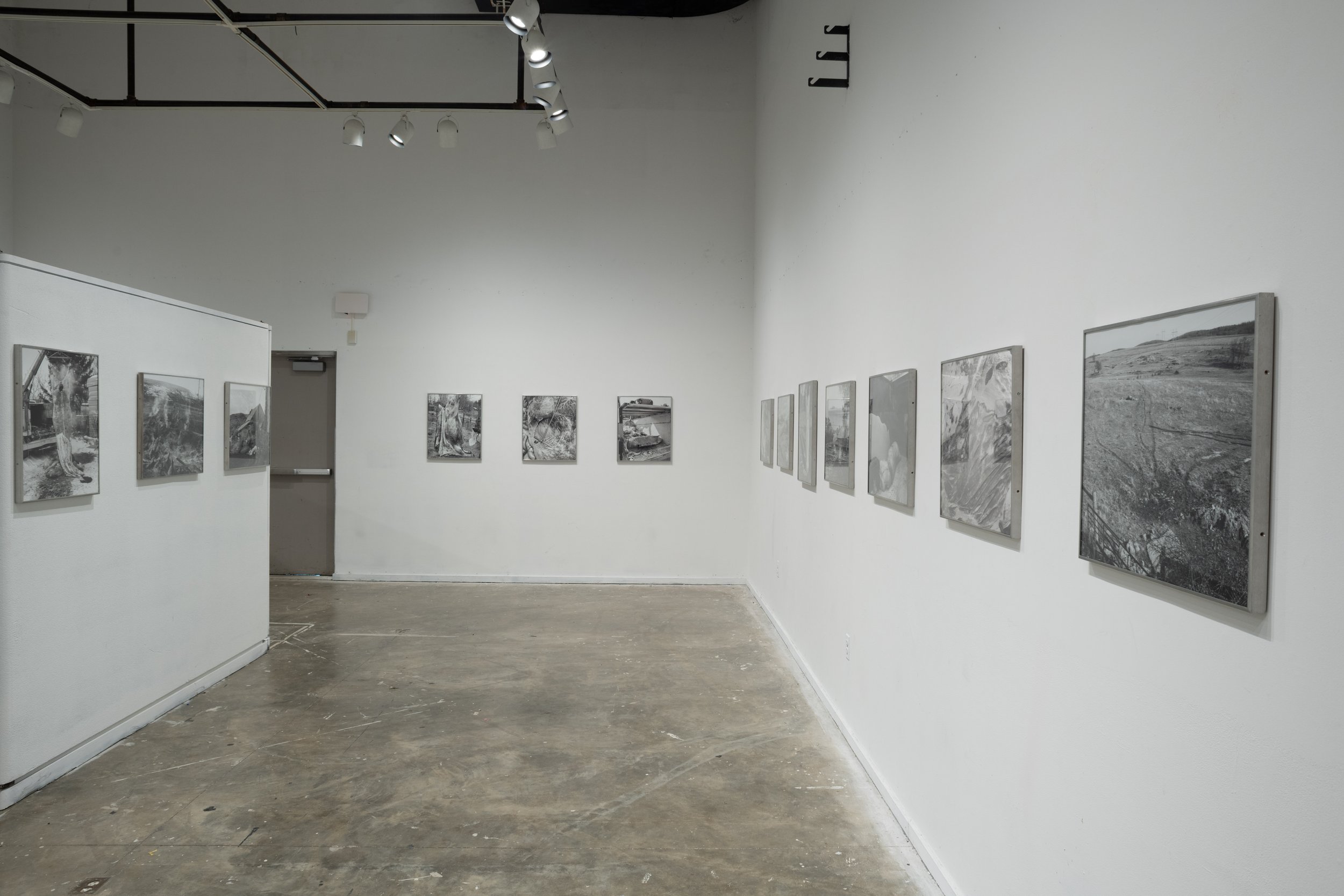

When the cow falls, I cannot watch. The thrum of a single shot consumes the barnyard. Fixated on the ground, I listen to the metallic clang of the fence as her hooves strike it. Even in death, her limbs fight to run. When I look up, her body heaves into a final convulsion before collapsing onto the earth, where the curve of her rigid spine rises and falls with the hill she lies beneath. A neat pool of blood wanders from her gaping throat into rivulets, sinking into the furrows carved by our boots in the mud. In this moment of stillness, the cow is dead, plainly and horrifically so.
By the laws of nature, that’s it. Her body should be subsumed by soil. Instead, its warmth is swallowed by the bitter air as a crane pulls it into the sky, where it sways as incisions are drawn straight from the feet down to the head. The pull of the knife scrapes like a zipper, unfurling the body into limp strips. Her hide falls into a dress, embellished by waves of muscle tissue. Enveloping her carcass, it pours downwards and gathers on the ground in a train of folds.
Hanging in this form, the cow is no longer a cow. She becomes something else, an amorphous pendulum swinging between forms, unfastened from the clarity of death. Home Slaughter emerges from this moment of ambiguity, when the remains of being—fragmented body parts, internal pieces, patterns on skin—are elevated beyond themselves.


